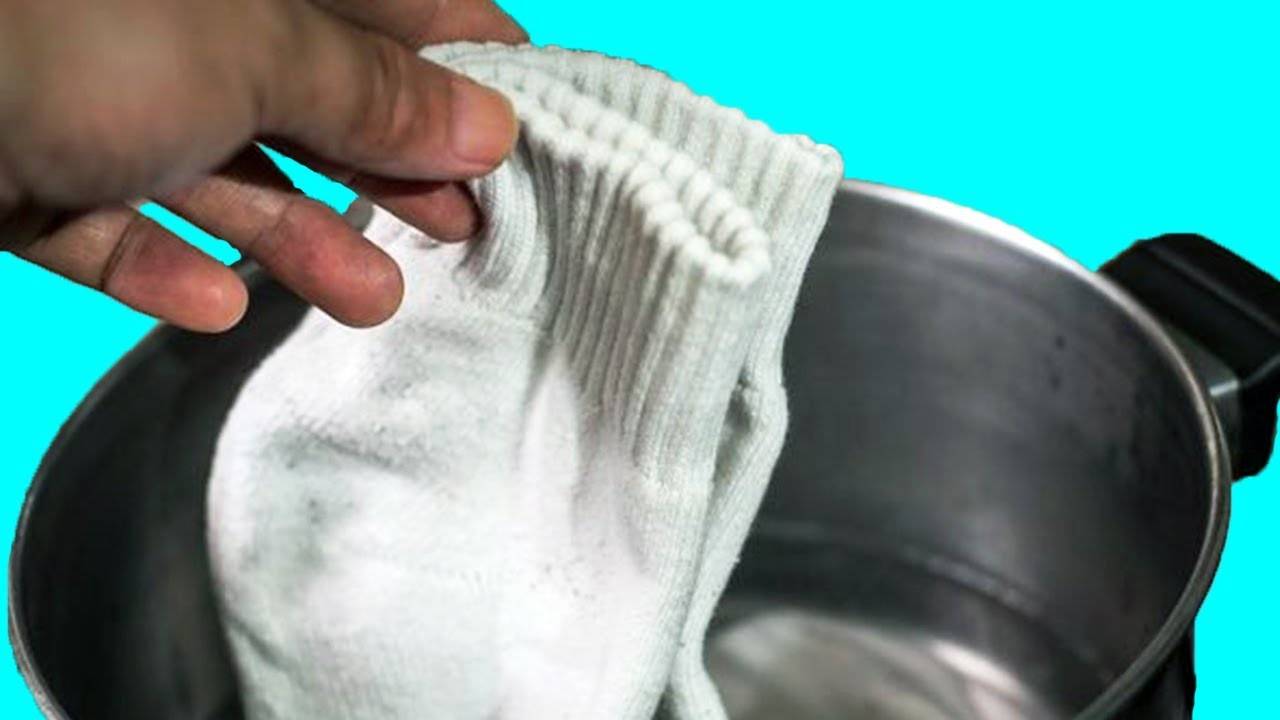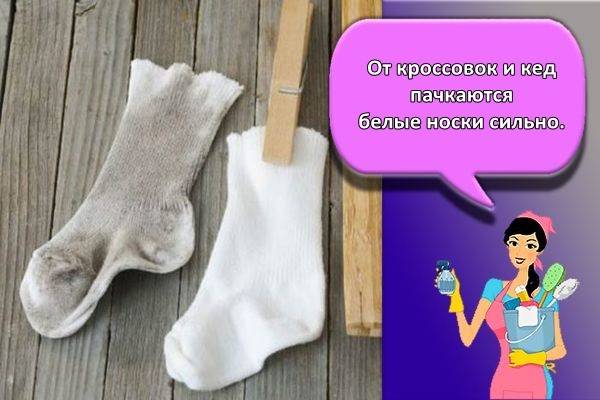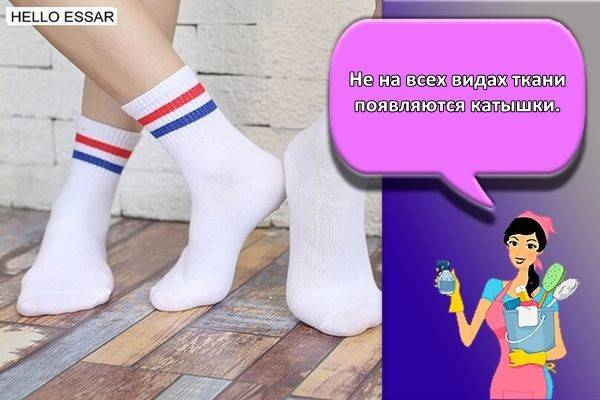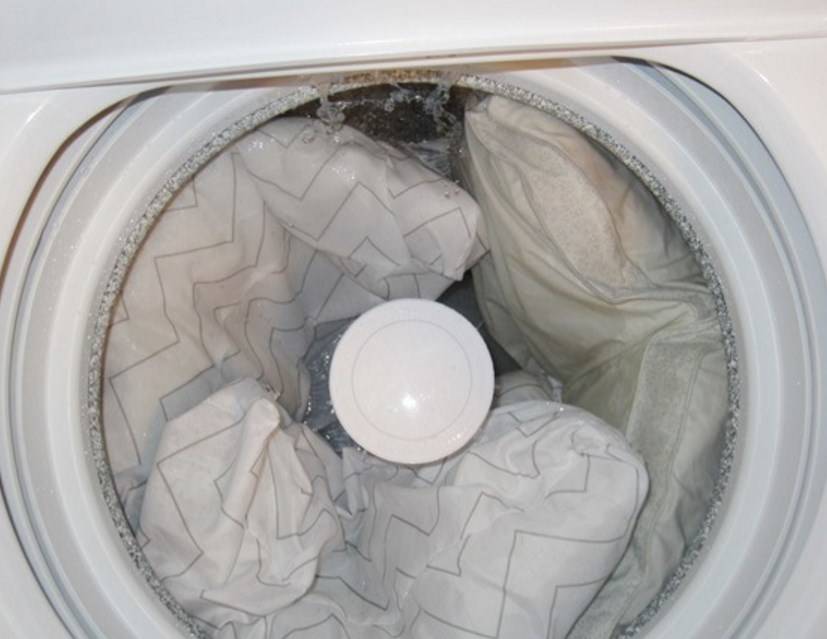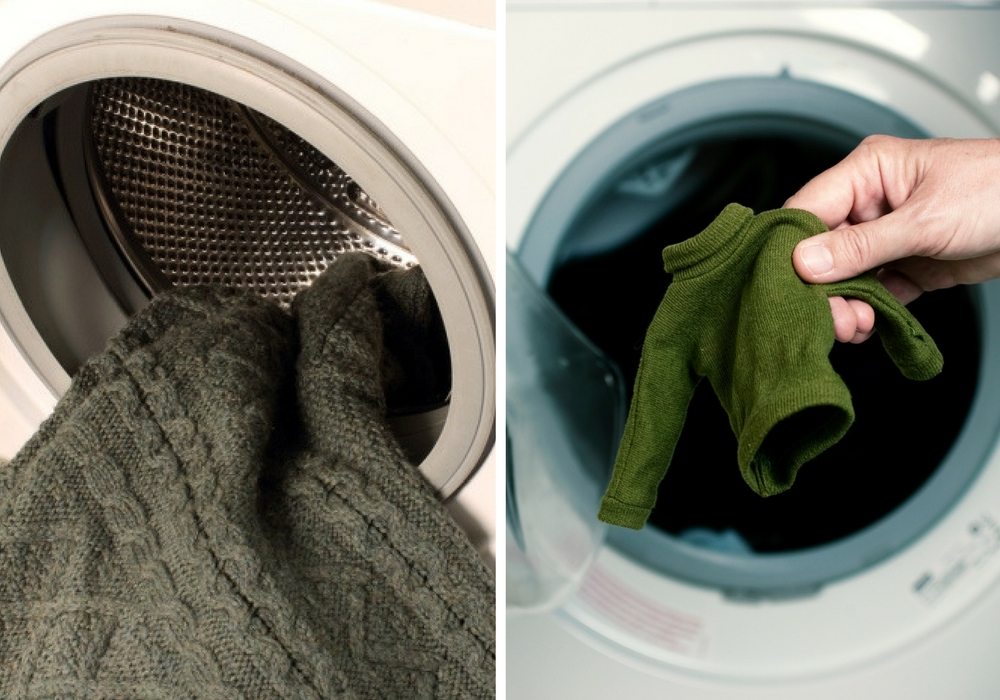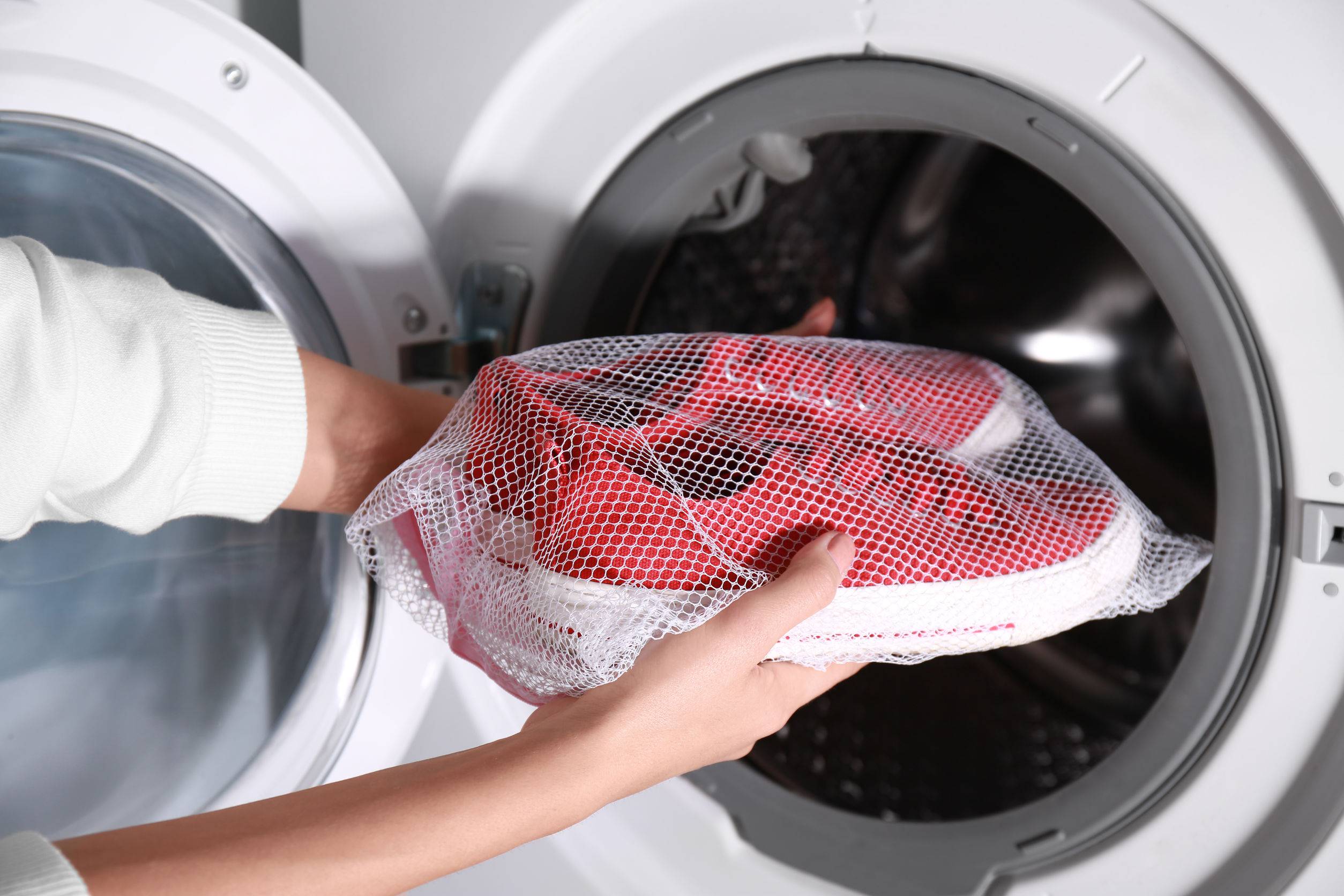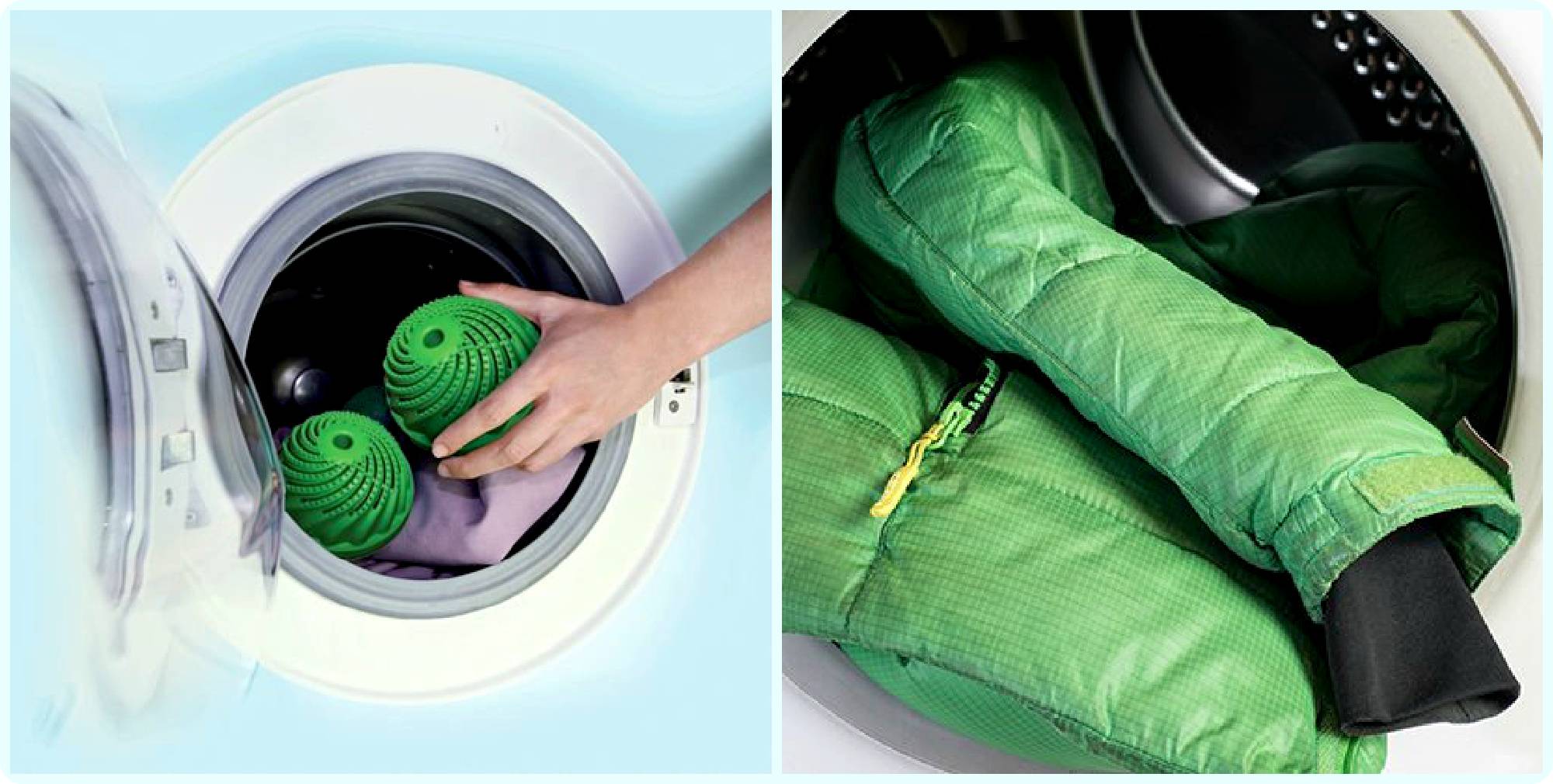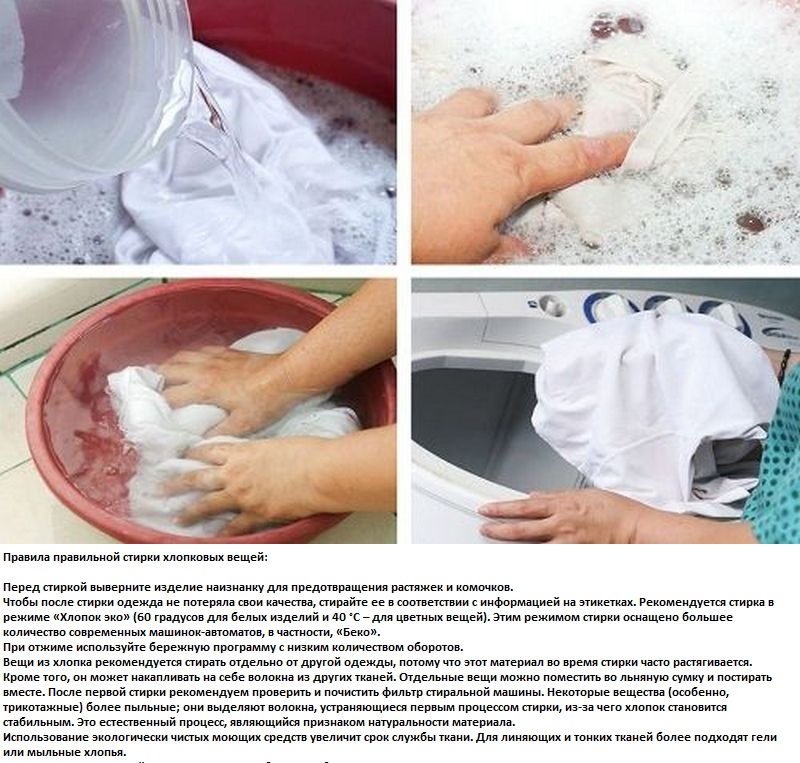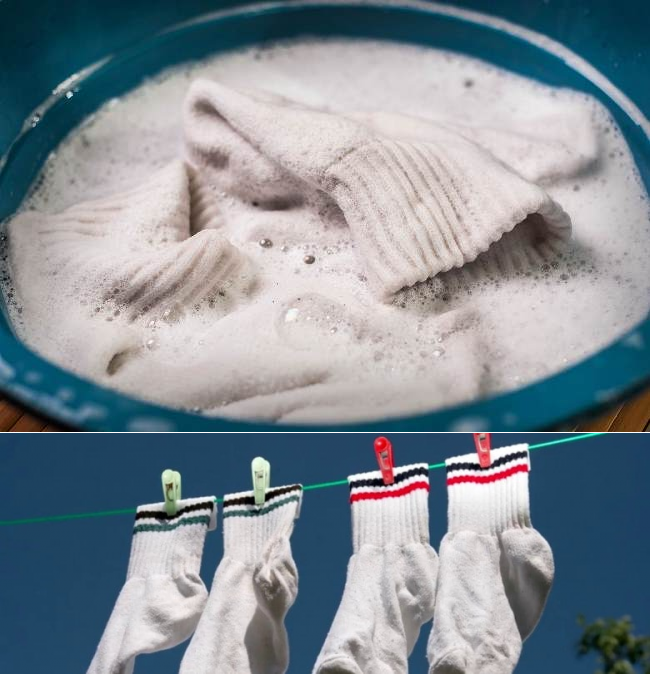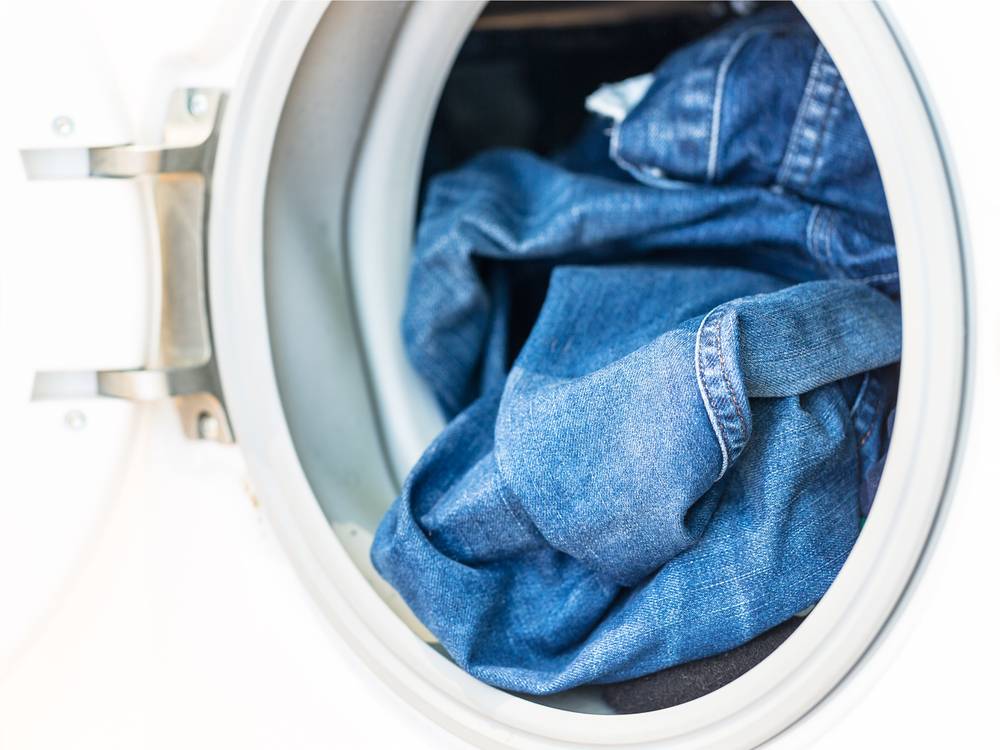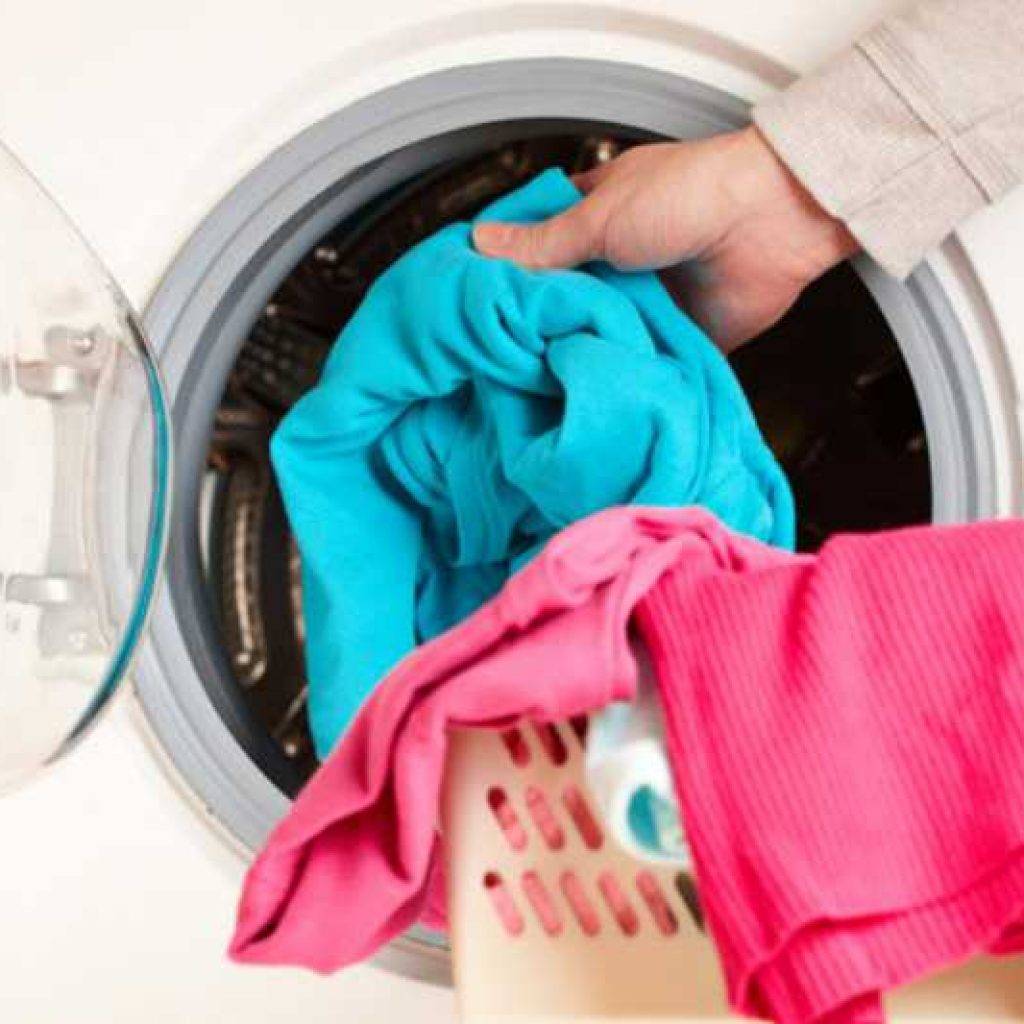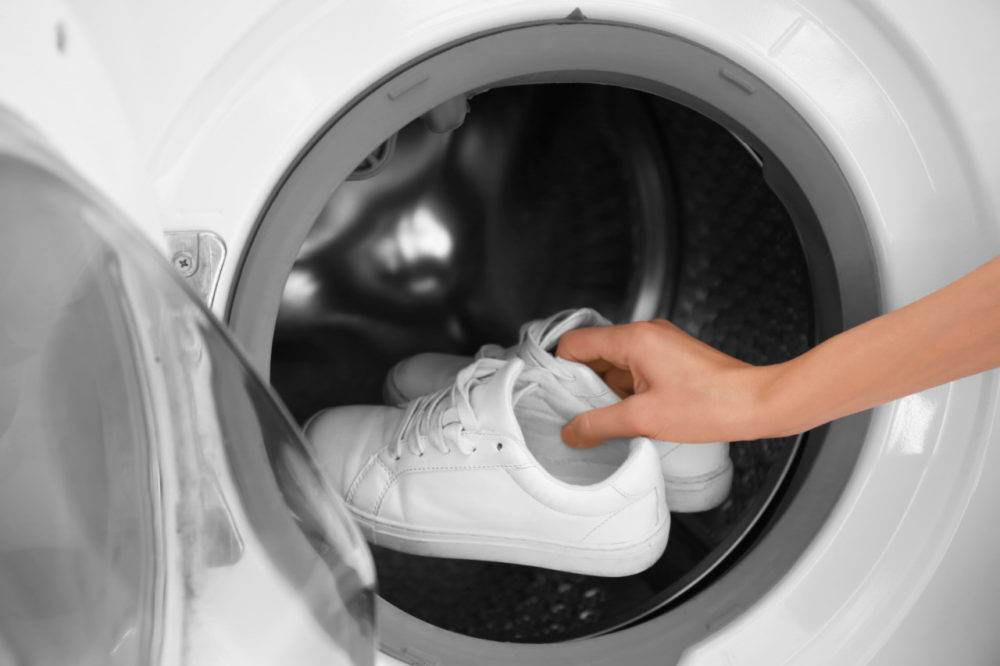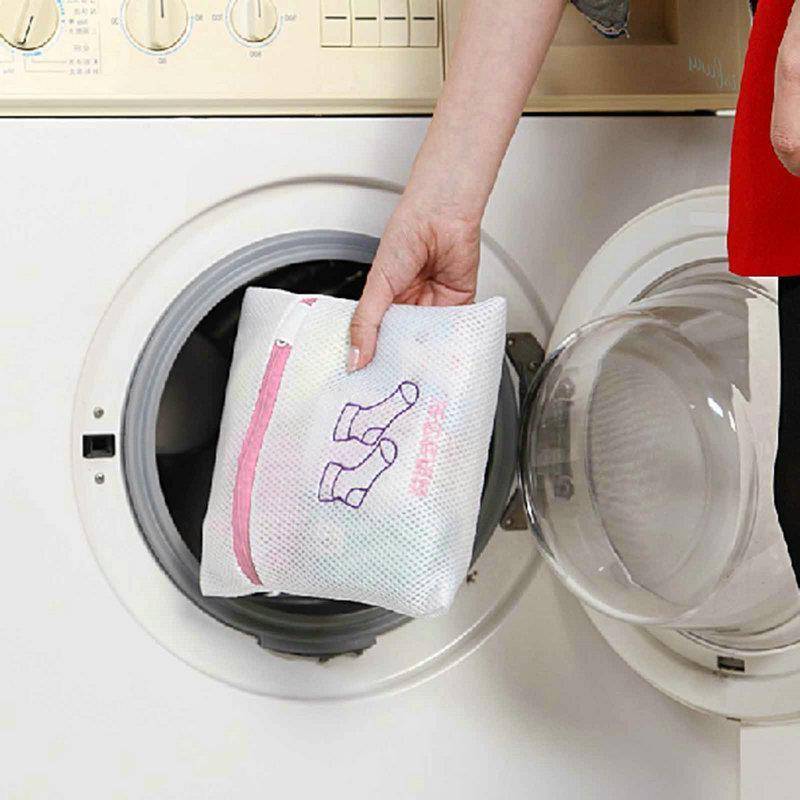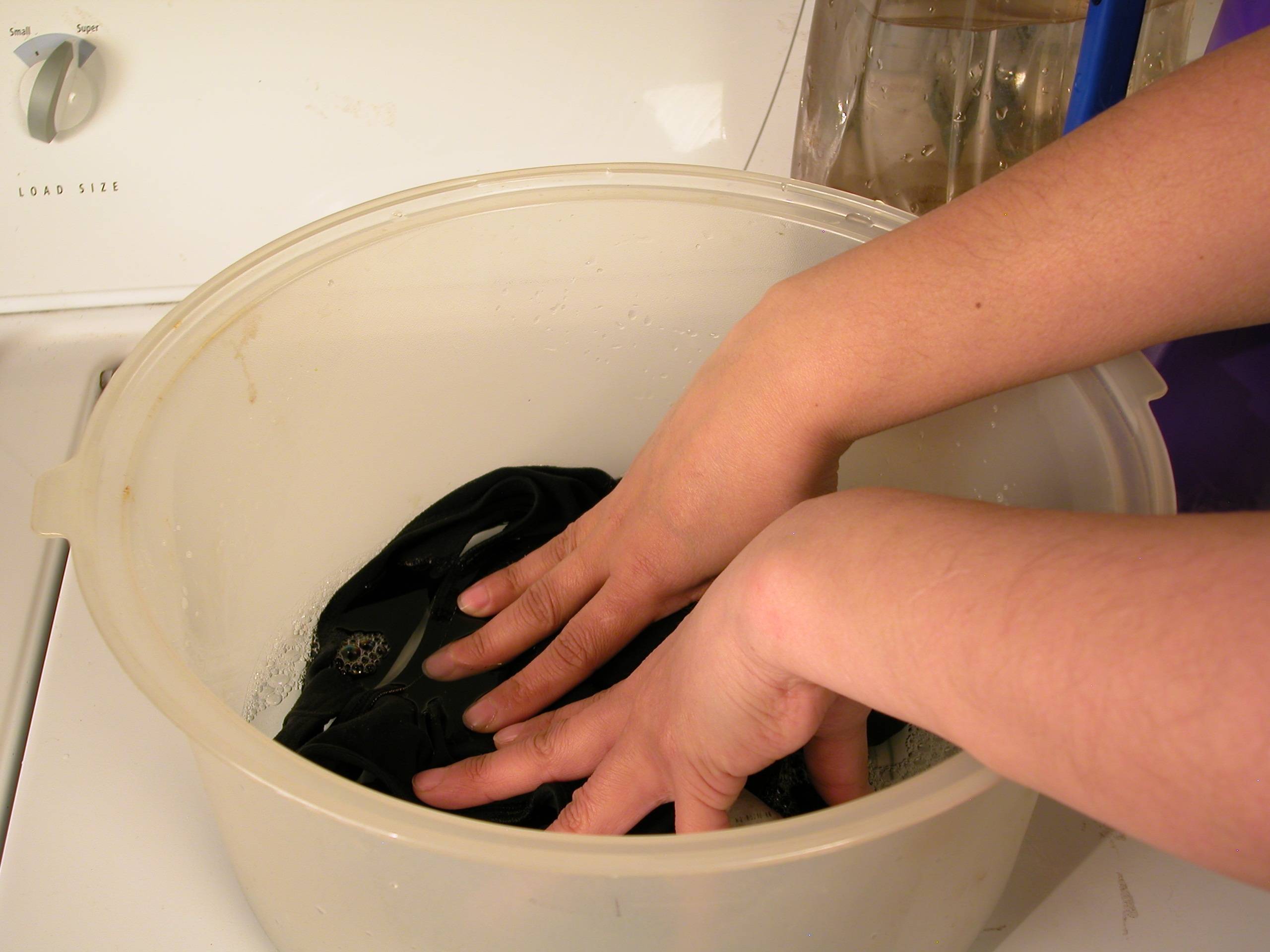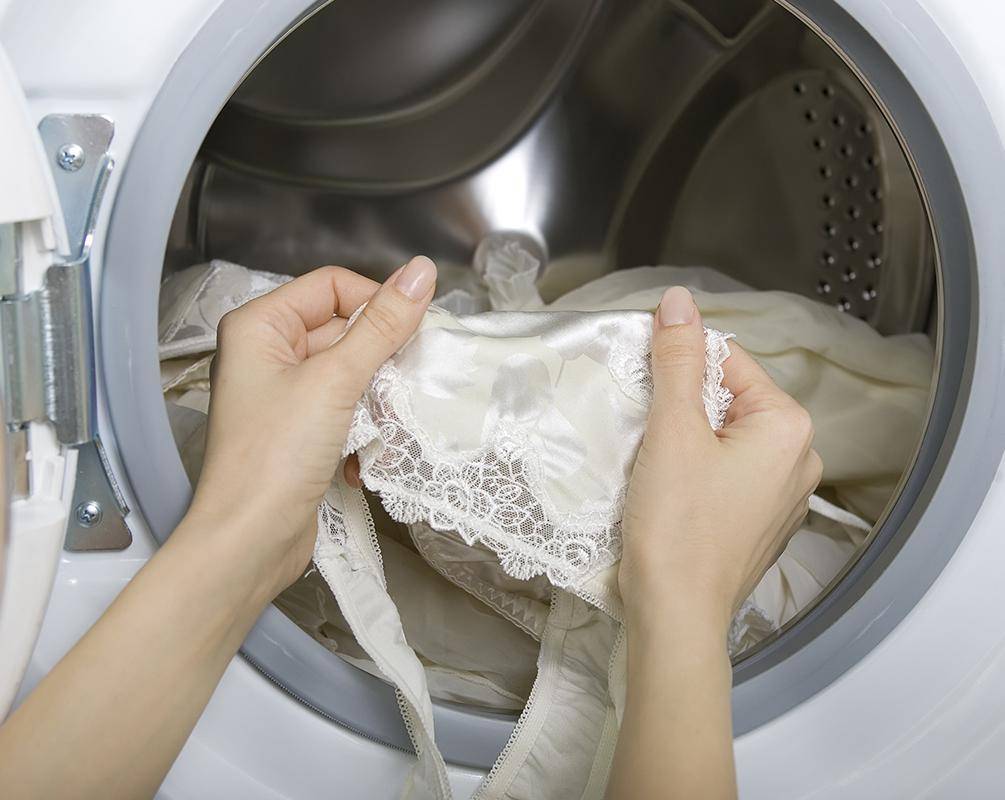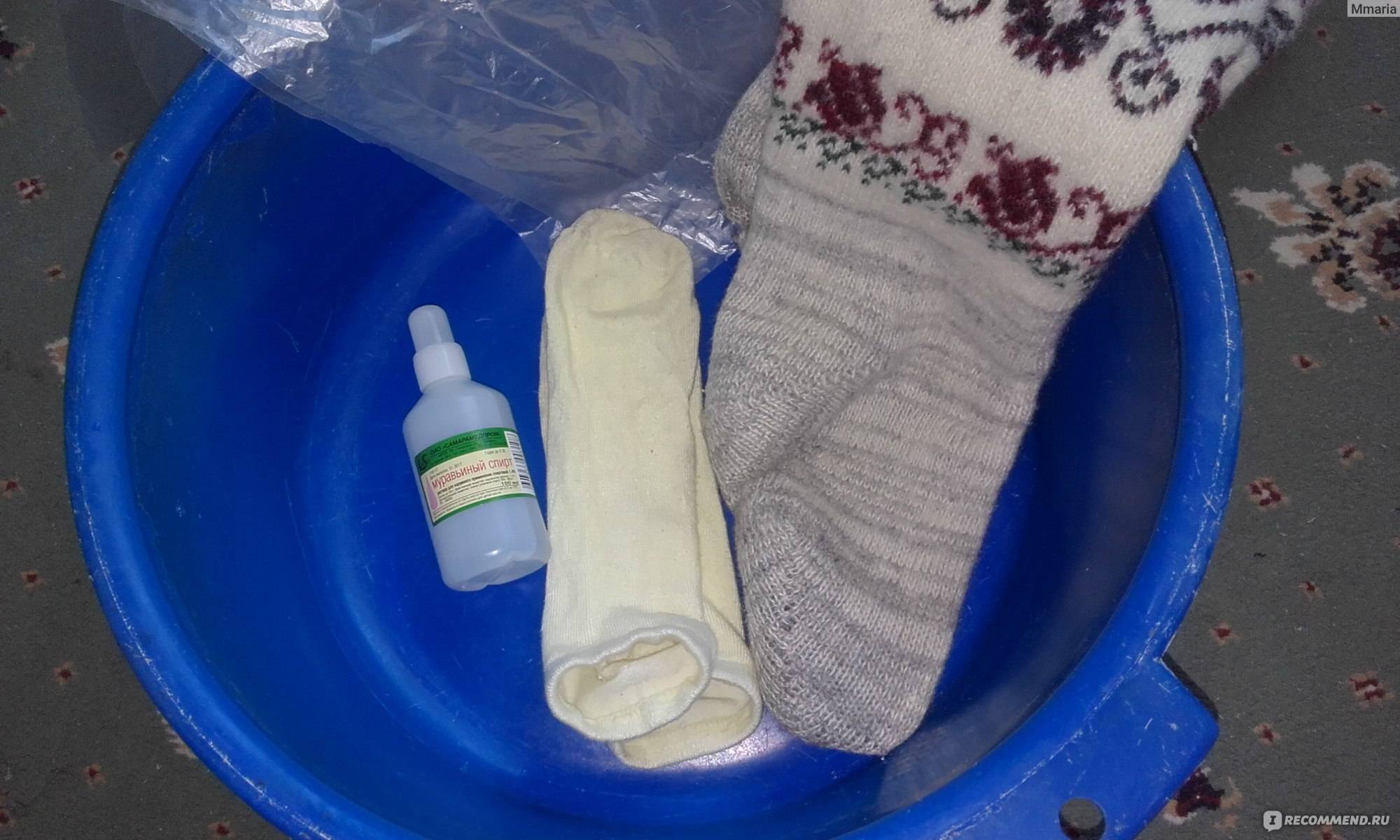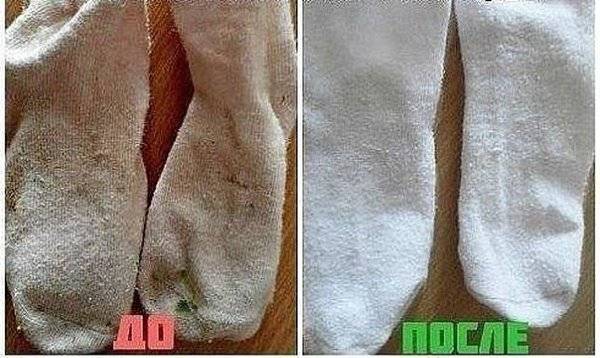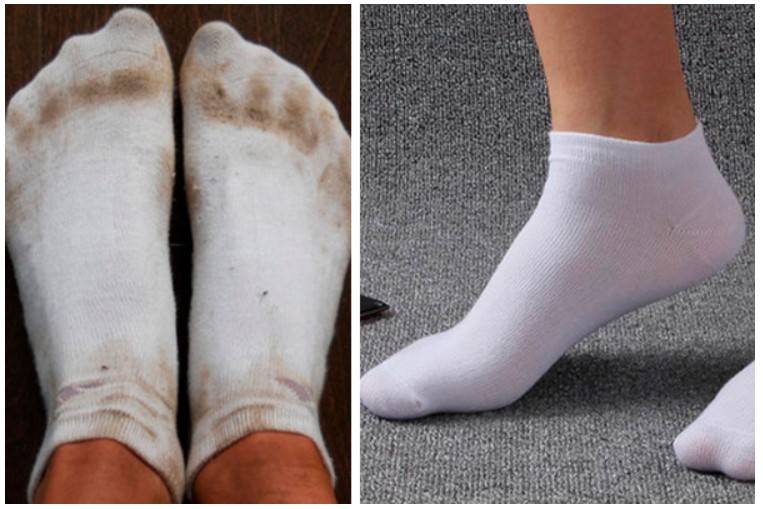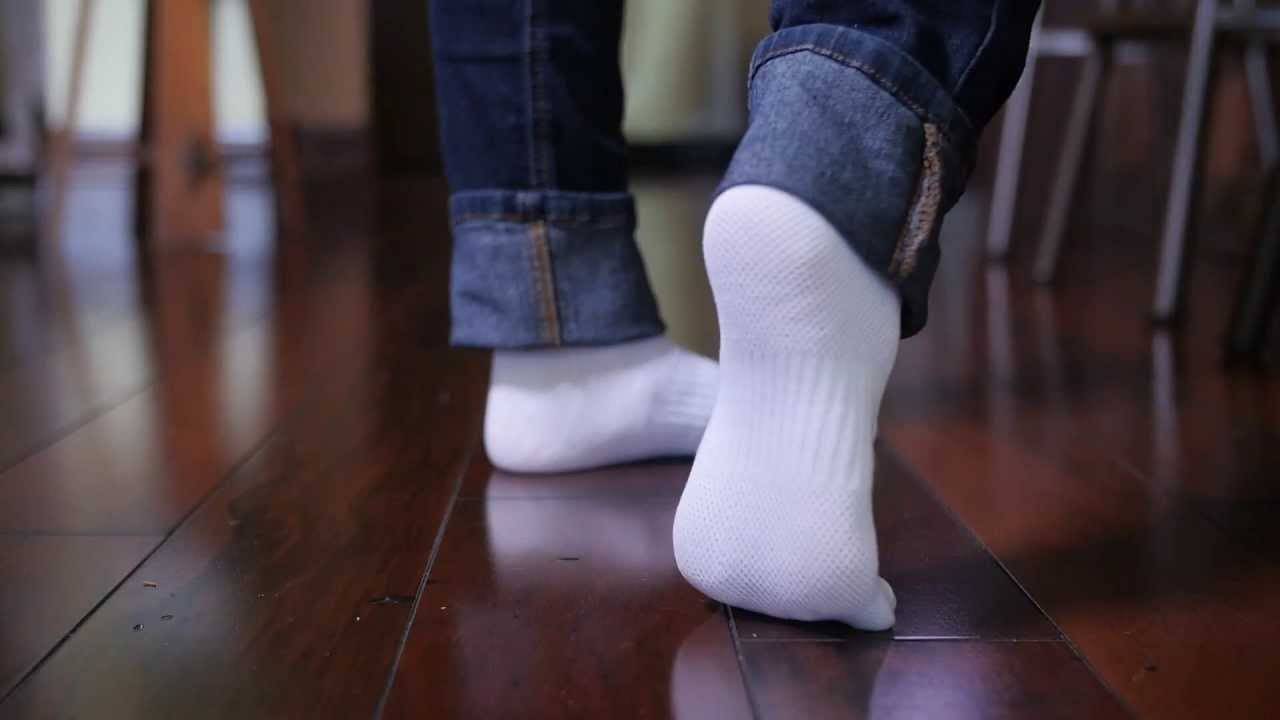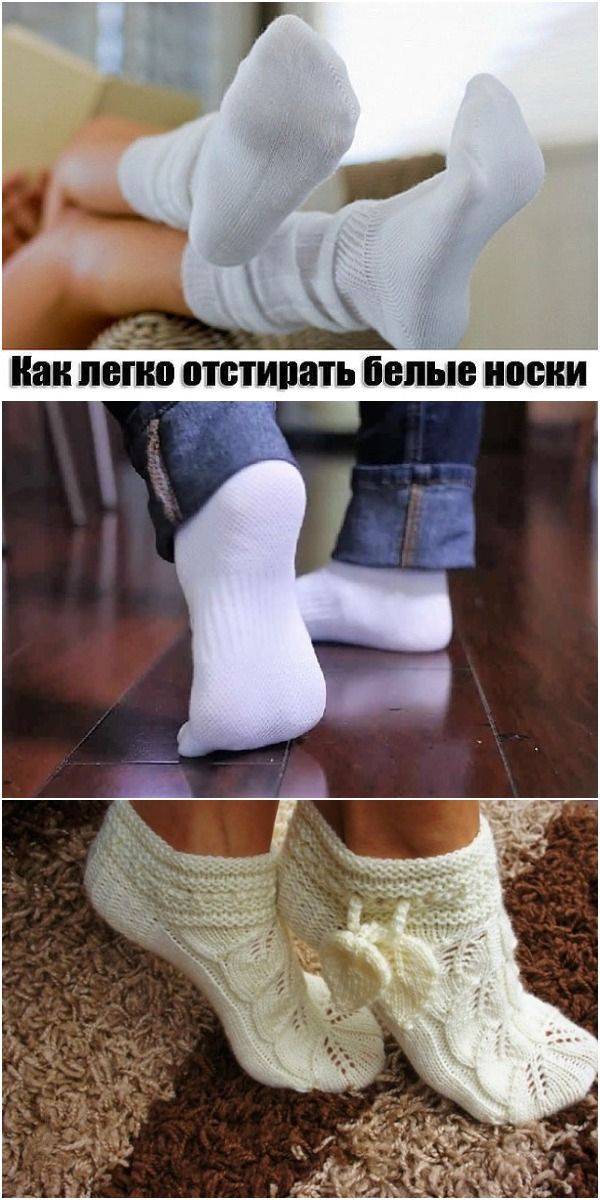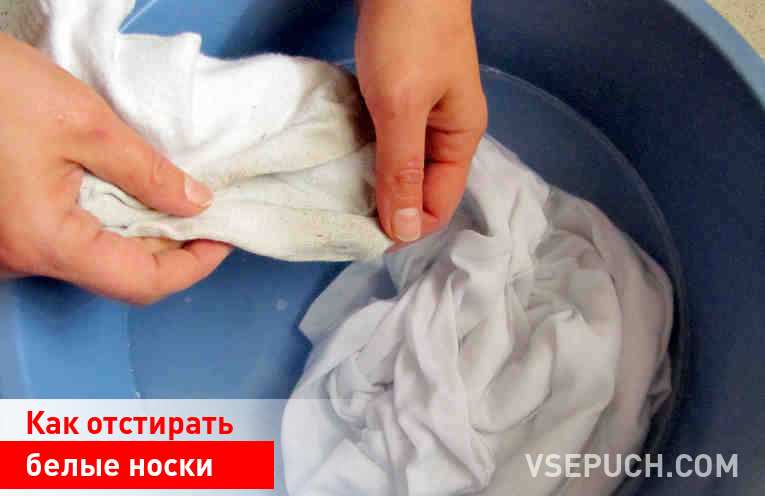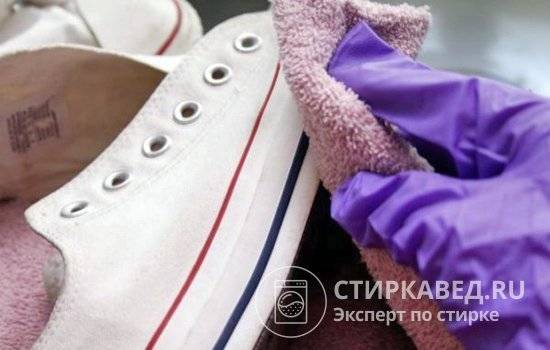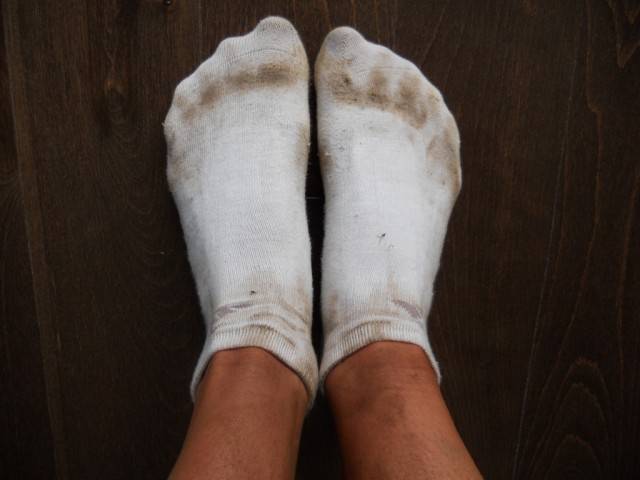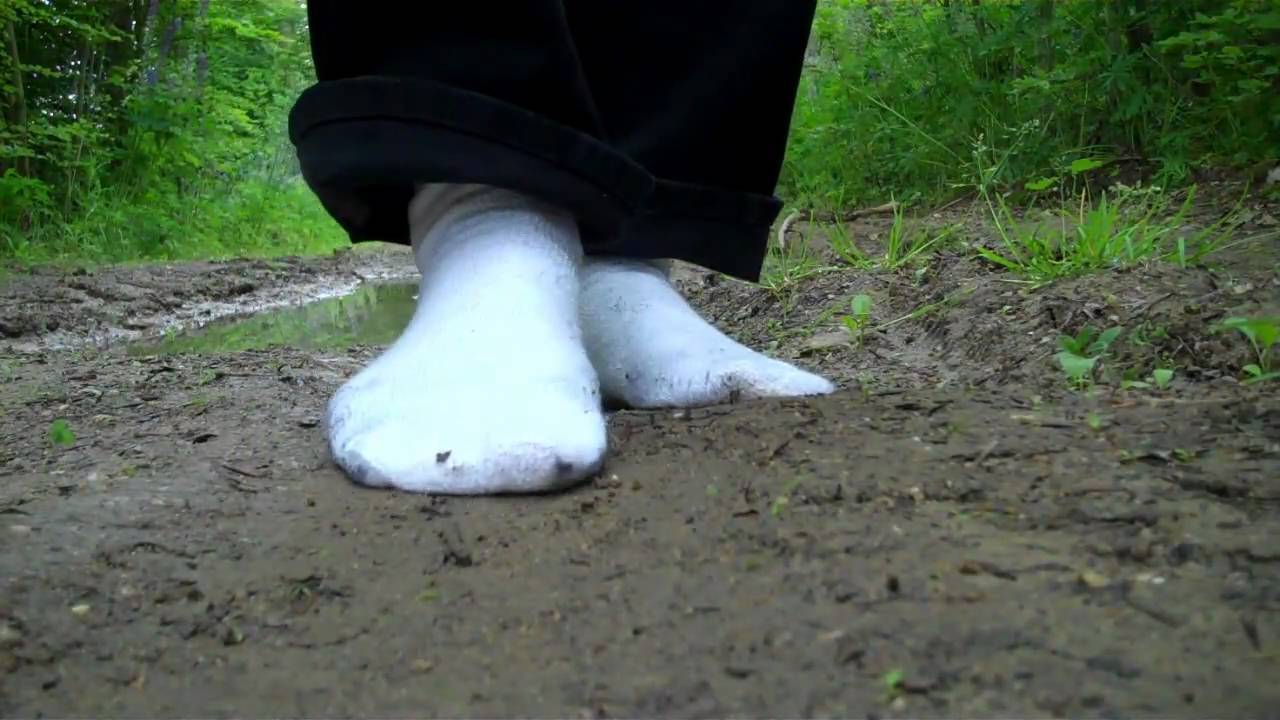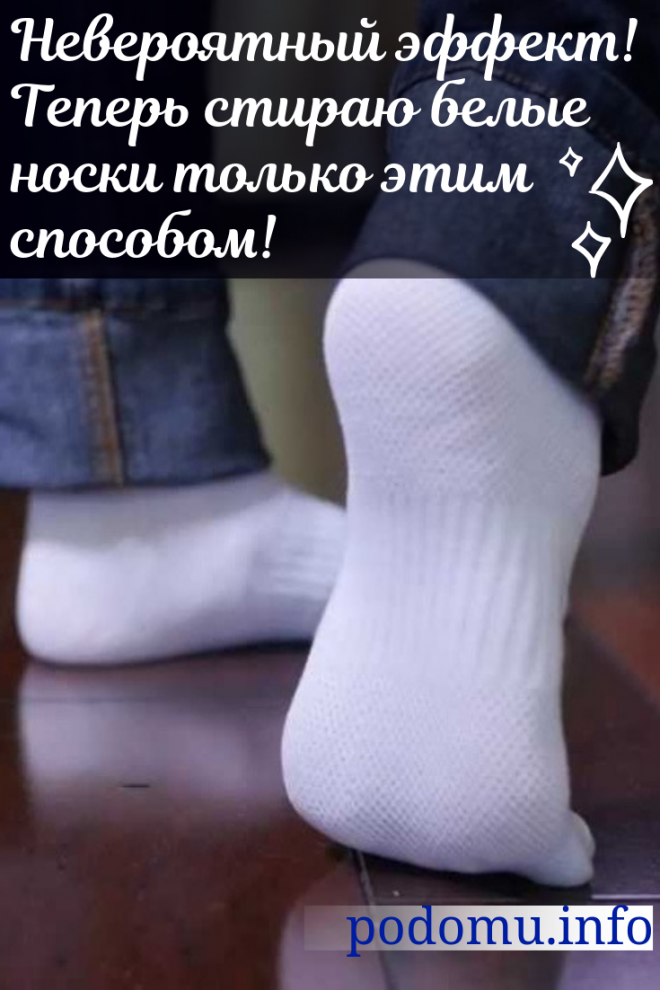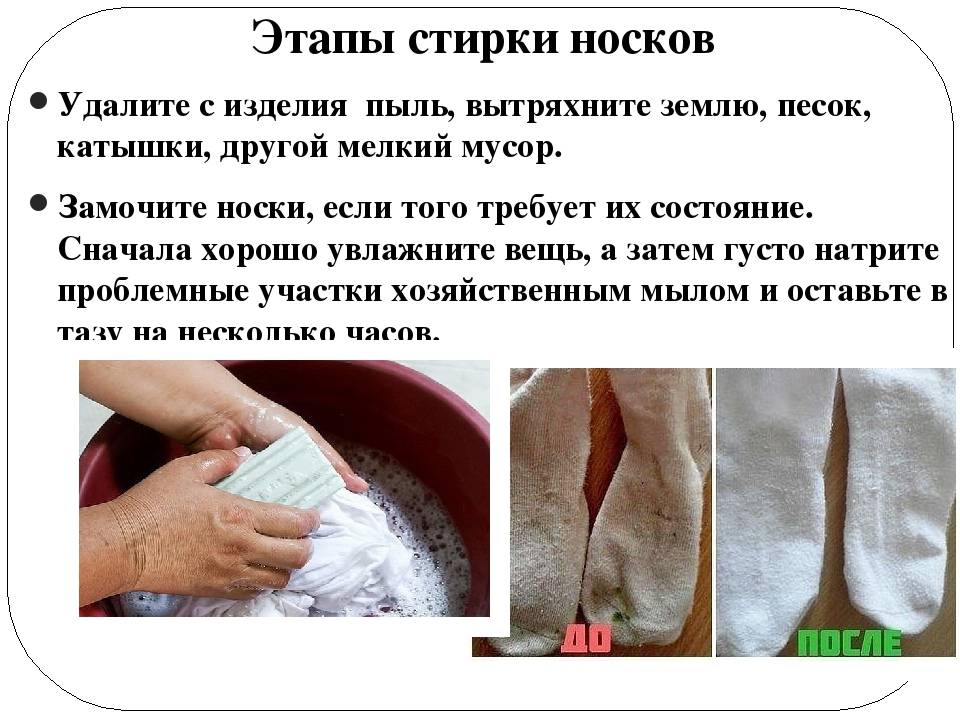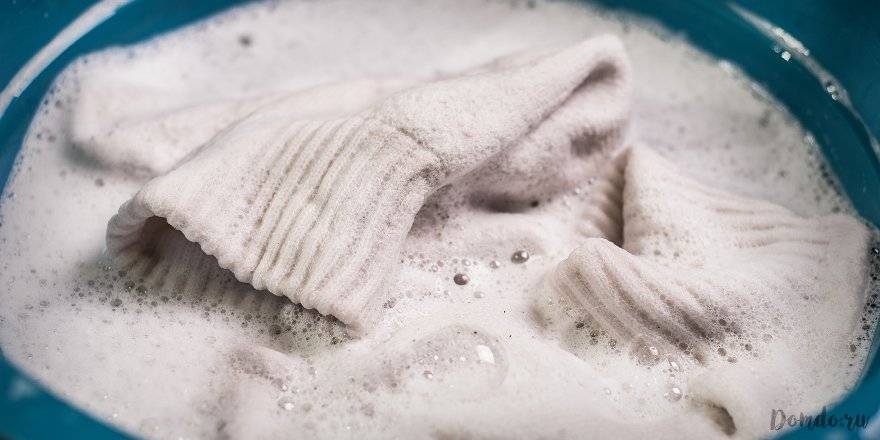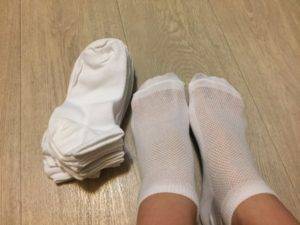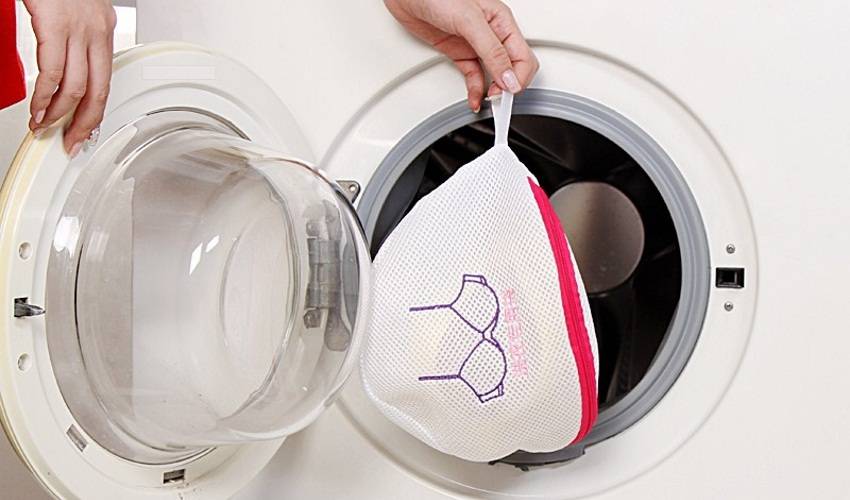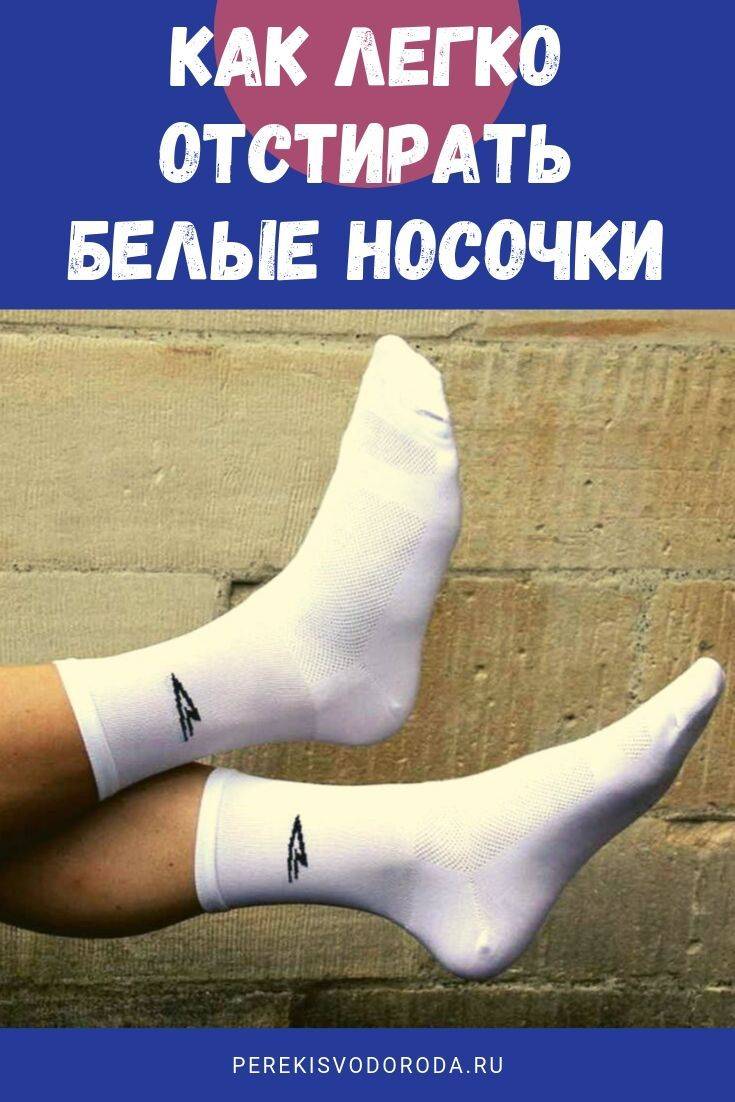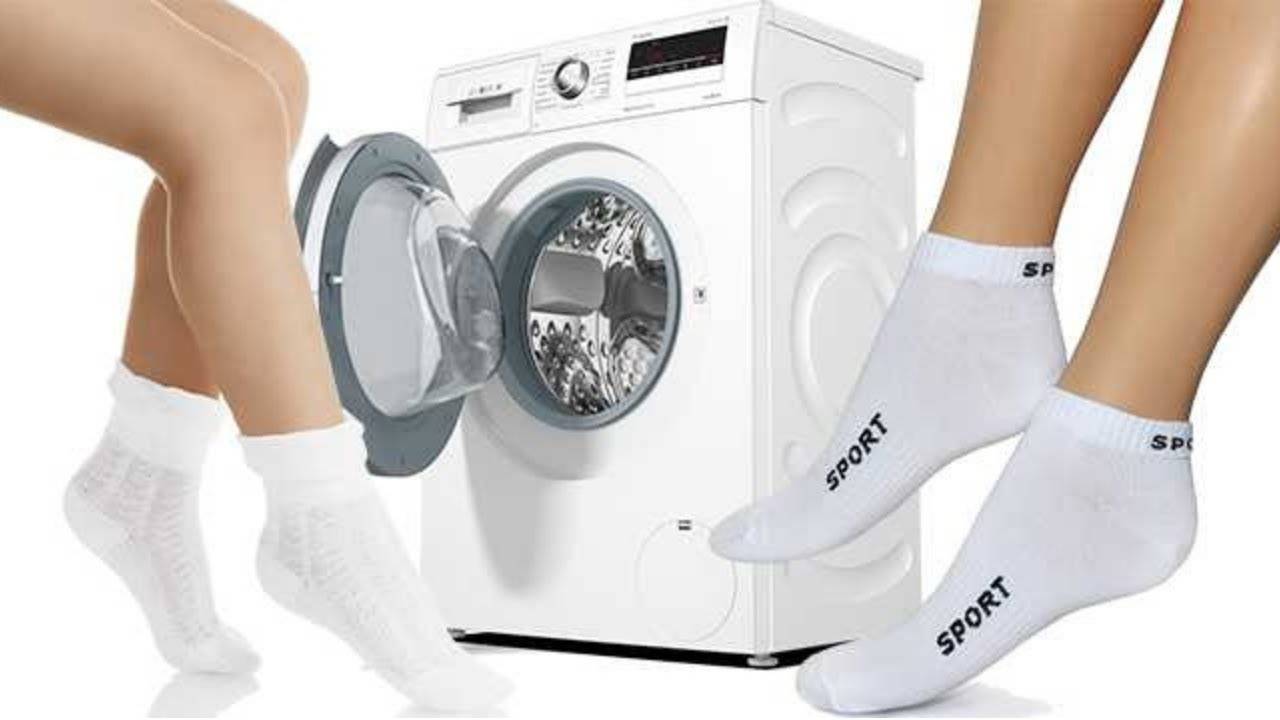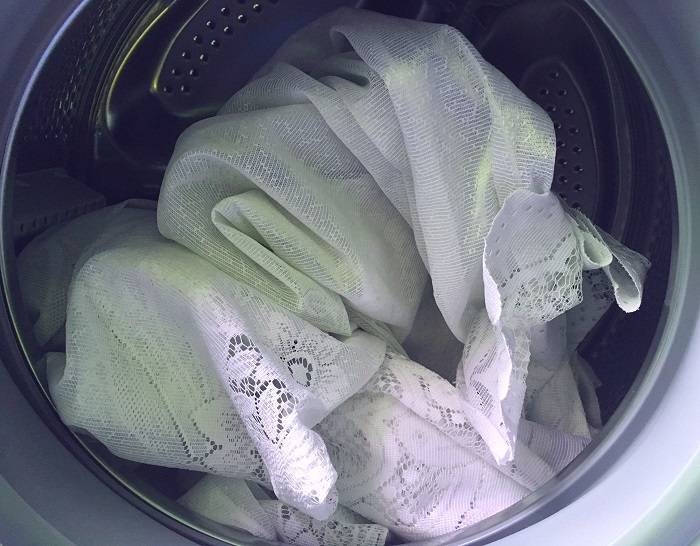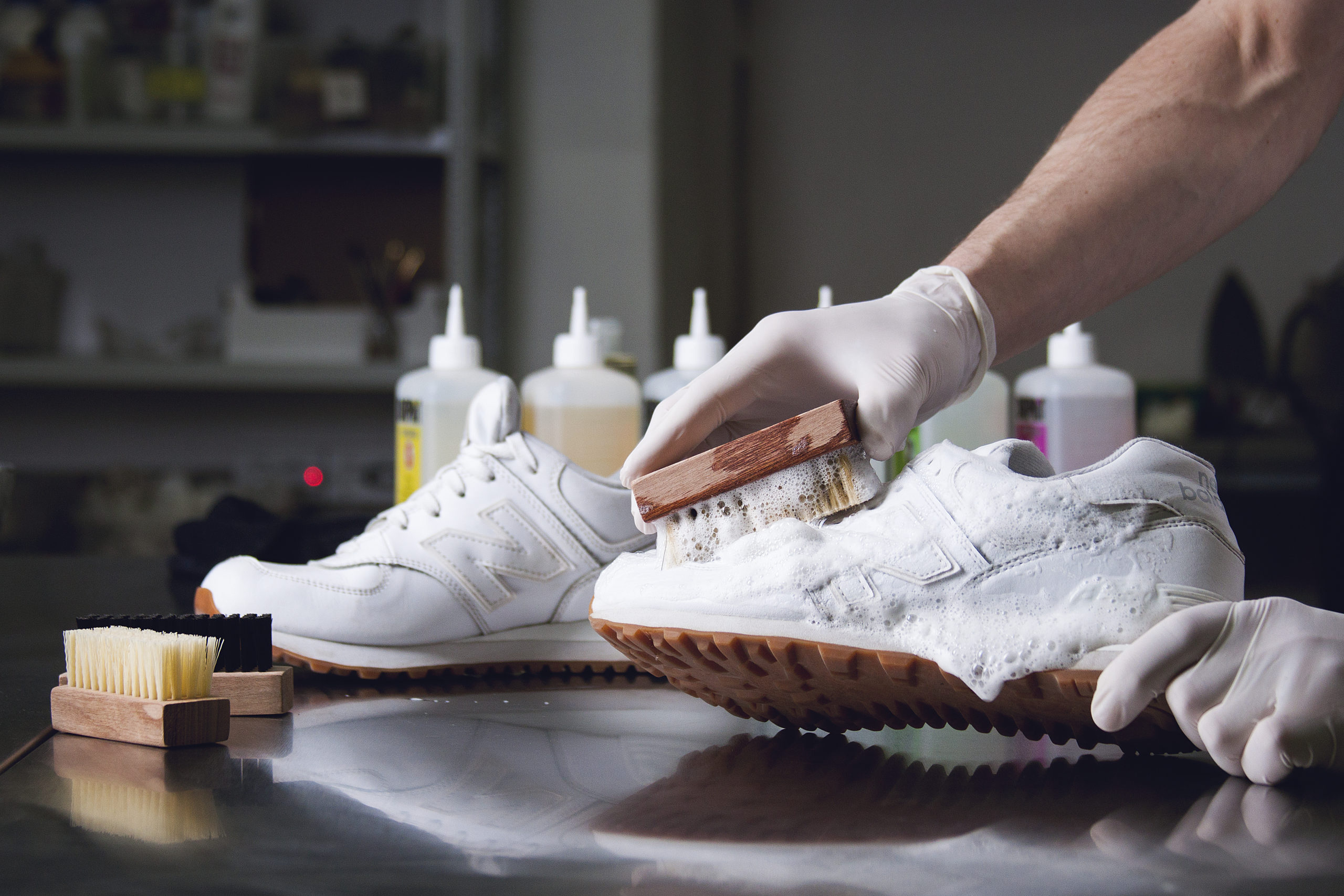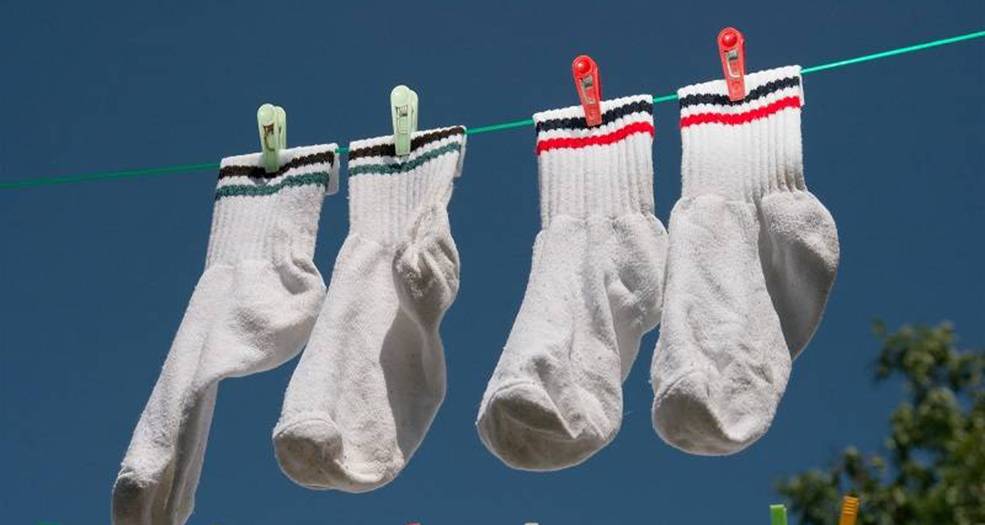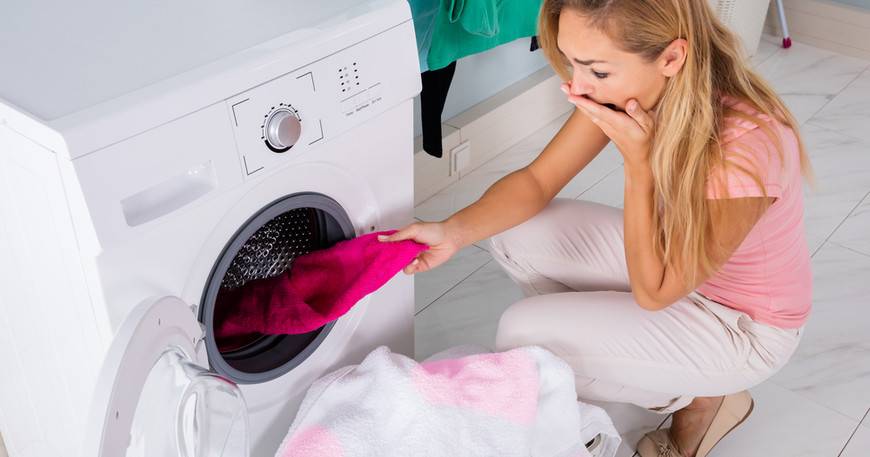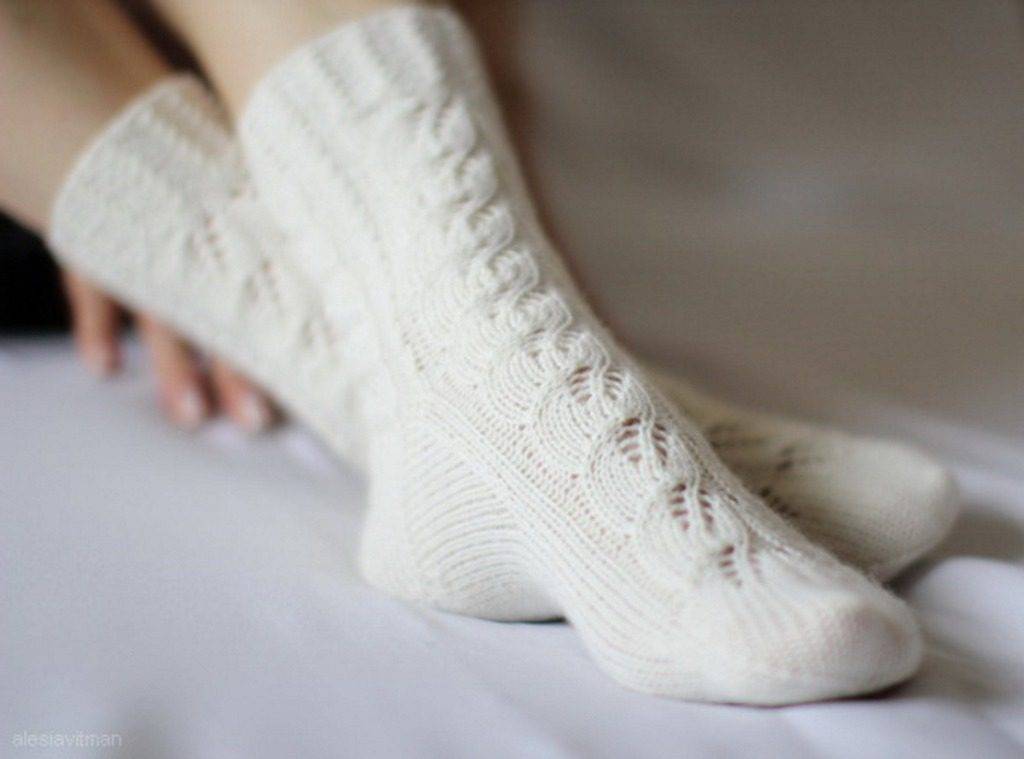Fundamental rules
If you have new socks, check the label. It should contain information about the temperature and washing mode. If the label has not survived, try to determine what material they are made of. Synthetics or wool should not be washed in water heated to over 35 degrees. Cotton plants are not even afraid of boiling.
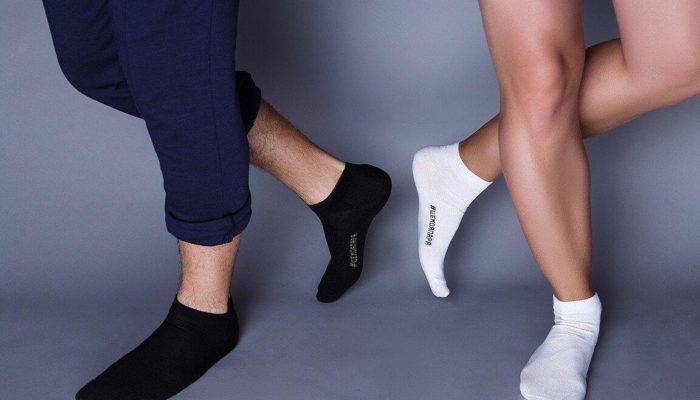
White socks should only be washed with white clothing or separately. Do your wash as often as possible. The best option is immediately after wearing. Do not shade them or postpone washing. The longer the dirt stays on the fabric, the harder it is to get rid of. Turn the socks inside out before washing, and dirt can be removed better.
In the washing machine
Before washing socks in the washing machine, rinse them well to remove dust and sand. To enhance the effect, soak them before washing. To do this, use one of the following methods:
- send socks for 1 hour in a solution of 1 teaspoon of apple cider vinegar to half a liter of warm water;
- you can use a special soap for stubborn stains. Lather your socks and soak overnight. Rinse and send to the machine;
- use ammonia. Pour a few tablespoons of alcohol into 1 liter. water. A couple of hours is enough for the remedy to work. Rinse thoroughly and machine wash;
- soak socks in 1 liter for half an hour. water with the addition of a teaspoon of vinegar;
- squeeze the juice of a fresh lemon into a bowl of water. Send the product to the basin for 2 - 3 hours. Treat especially dirty areas with undiluted lemon juice, sprinkle with powder and rub. Soak for 20 minutes and send to the drum.
- soak socks in warm water and rub with laundry soap. Fold them in a bag, tie them up and let the soap run until morning. Rinse in the morning, send to the machine and use the quick wash.
Experts recommend placing several tennis balls or special balls for washing down products in the drum. They will enhance the effect of the detergent and significantly improve its quality.
Set the mode and temperature in strict accordance with the type of fabric of your socks. High temperatures can permanently damage synthetic or wool products. If you add bleach to your laundry detergent, your socks are more likely to return whiteness.
Handwash
Since socks are a small part of the wardrobe, it is easier, more economical and faster to wash them by hand than waiting for the laundry to be machine washed. Especially if frequent washing is required. Some fabrics generally recommend hand washing only. For example, wool.
Use one of the soaking agents above to wipe dirt off white socks with your hands. At the end of the soak time, wash with any powder. Putting your socks on your hands like mittens and rubbing against each other will make it much easier to wipe dirt off the sole. Just do not rub hard, and do not use excessive force when twisting. It is enough to make a lump out of the socks and squeeze lightly.
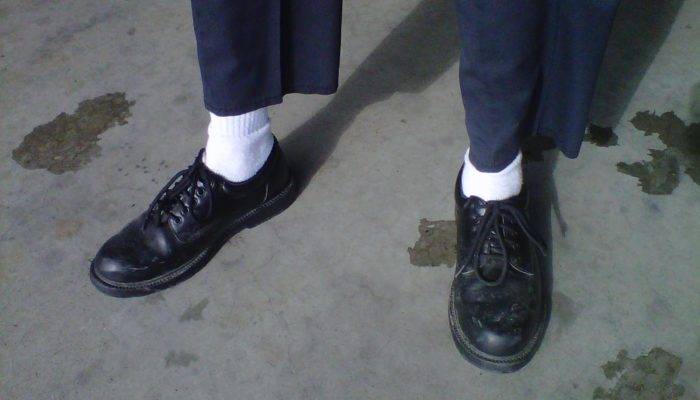
A good way to give your socks their fresh look is by boiling them down. It can only be used for cotton items. Pour half a pot of water. Add shavings of laundry soap (you can add the powder at the same time) and half a lemon. Place socks in the resulting solution and simmer for about 20 minutes. After boiling, wash and rinse well.
Another way to digest: dilute in 2.5 liters. heated water 2.5 tablespoons of soda and 1 tablespoon of ammonia. Place socks in the solution and boil for half an hour.At the end of "cooking", rinse and send to dry.
Black Sole Fight
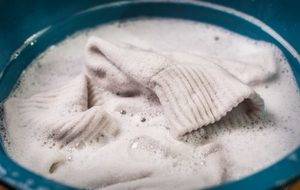 Recently, some manufacturers have been producing poor quality shoes. Competition in the market forces manufacturers to reduce the cost of their products. Therefore, very often they resort to the use of accelerated technologies and the use of cheap and unstable dyes for the interior finishing of shoes. This is very common in bright sports shoes: sneakers and sneakers. These shoes can stain your socks. It is especially offensive if this happens with white socks. A problem arises: how to wash the white socks from the black sole. It will take a lot of effort to remove such stains. But it is still possible to wash them:
Recently, some manufacturers have been producing poor quality shoes. Competition in the market forces manufacturers to reduce the cost of their products. Therefore, very often they resort to the use of accelerated technologies and the use of cheap and unstable dyes for the interior finishing of shoes. This is very common in bright sports shoes: sneakers and sneakers. These shoes can stain your socks. It is especially offensive if this happens with white socks. A problem arises: how to wash the white socks from the black sole. It will take a lot of effort to remove such stains. But it is still possible to wash them:
- If your shoes have dyed white socks, chlorine bleach will help your cotton garments. In addition to them, "White" or even "Domestos" can cope with such pollution. These products also contain a large amount of chlorine. They are strong enough, so you should not overexpose things in such a solution. Otherwise, the bleach can corrode the fabric.
- You can not soak the socks at all, but simply rub the painted areas of the socks with a swab with chlorine-containing agents. To do this, moisten the tampon in a solution of the product diluted with water in equal amounts. After such processing, wash as usual.
- Synthetic and woolen socks cannot be washed with chlorine products. Lemon juice can be used instead. It needs to be dripped directly onto the stain of the shoes and held for 10-15 minutes. After that, things can be washed in any way. If you are not satisfied with the result, this procedure can be repeated again.
Advice! To avoid ruining your socks, clean the inside of your shoes from time to time. And you can wash shoes that can be washed in the washing machine.
As you can see, there are currently many time-tested recipes for how to wash socks (white in particular). You just have to choose the option that suits you and put it into practice. The result obtained will certainly delight you.
Machine wash white socks
It is best to get rid of snow-white socks from dirt in the washing machine. However, simply washing them will obviously not be enough. To whiten them qualitatively, you will have to resort to some tricks, and their essence most often lies in soaking. Before sending the laundry to the drum, it must be thoroughly soaked, and there are many options for such soaking. Let's take a look at a few of them.
- Soaking in boric acid solution. To do this, buy boric acid in powder or liquid form at the pharmacy, dissolve it in water at the rate of 1 tablespoon of the substance per 1 liter of water and soak white socks in this solution for two hours. After that, they will need to be washed in the washing machine as usual.
- Soaking in a vinegar solution. To do this, heat the water to a temperature of about 40 degrees and dissolve a teaspoon of 9% table vinegar in it. Soaking socks in this solution should be about half an hour, after which you can wash.
- Soaking in a solution with lemon juice. Squeeze the juice of a whole lemon into a basin of water and soak socks in the resulting solution for 2-3 hours. If stains remain on the socks after soaking, they will need to be treated with lemon juice and sprinkled with washing powder. Lightly rubbing especially dirty areas will need to be washed in the washing machine.
- Soda. If you pour a glass of baking soda solution (about 1 teaspoon per 200 ml of water) into the rinse aid compartment before washing in the machine, it will help to effectively bleach gray socks.
- Laundry soap or stain remover. Soiled white socks should be soaked in warm water and rubbed vigorously with laundry soap (or stain remover) on both sides. Wrap them tightly in a plastic bag and leave them there overnight, and then wash them in the washing machine in the fast mode in the morning.
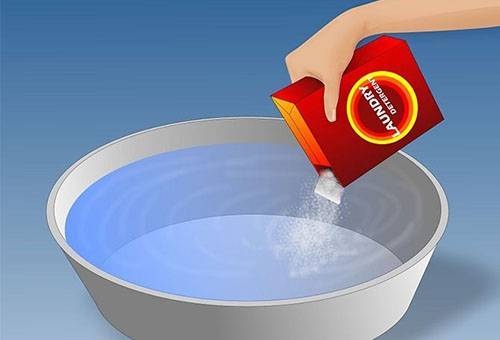
Preparation
In order for the sneakers to wash well, they need to be properly prepared. If you do not follow these recommendations, then dirty spots will remain.
Moreover, the wrong insertion into the car can harm it. Up to the point that there is an imbalance in the drum.
So what do you need to do before bookmarking?
- Pull out the insoles
- Pull out the laces and put them in any light bag, you can also in a regular sock.
- Wash the sneakers with a brush from pieces of adhering earth
- Remove burrs and other thorns, if any
If you don't put your shoes in the bag, they will hit the drum too hard and the machine will be damaged.
But that's not all! You cannot wash one bag in an empty drum. Be sure to put more things in. This is necessary in order for the wash to come out of high quality, due to the friction of the matter with each other. That is, if you put one bag, then it will only soak and dangle in the washing machine, and, in fact, washing will not work.
Choose things that do not fade. Especially avoid black socks. It happens that one black sock, accidentally caught in a white wash, spoils absolutely all things and stains them in a dirty gray color.
As an important stage in preparation for washing, proper care of sneakers can be considered in itself, which will greatly facilitate the task. For this it is enough:
- regularly clean the sole after walking;
- immediately remove arising local contamination;
- do not store unwashed converse in the winter - later there is a chance not to wash them at all;
- during long-term storage, it is recommended to tightly stuff white paper towels inside (in extreme cases, white paper) so that no deformation occurs.
When directly preparing for washing, you need to remember: if you just throw sneakers into the washing machine and start it, nothing good will come of it. In order to avoid disastrous consequences, before starting washing:
- the insoles are removed - they should be washed separately by hand, otherwise shrinkage or deformation will occur;
- the laces are pulled out - for them, a separate hand wash is also provided, because in the places of contact with the metal eyelet rust forms, which will be very difficult to remove, or they can be tightened by the drum;
- clean the sole of dust and dirt, wash heavily soiled fabric areas, clean with a soft brush;
- in order not to harm the washing machine, it is safest to place the sneakers in a loose old pillowcase or a special mesh bag;
- it is advisable not to wash the converse "alone", but to load with them some soft, non-fading fabric things - so they will not hit the drum too with dense soles.
Important! So that the result does not turn out to be unforeseen, it is necessary to reckon with the individual characteristics of your sneakers - the color, the degree of dirtiness and the state of wear. If there are tearing parts on the shoes - machine wash is contraindicated.
Sneakers are designed for outdoor activities, which means they are at risk of frequent pollution.
It is important that these shoes are washable. To do this, you should use an automatic washing machine or you can perform the procedure manually.So, we have already figured out whether it is possible to wash sneakers in a washing machine, it remains to familiarize yourself with the preparation procedure
It is necessary to strictly follow the recommendations, since the result largely depends on the thoroughness of this stage.
First of all, you need to look at the products in order to visually determine whether they can withstand an intense wash. If the shoes are made from cheap materials, the result is unlikely to be positive. Most likely, after such a procedure, it will have to be thrown away. The situation is similar with those models on which there are embroideries, stickers and other decorative attributes that are at risk of coming off. To avoid such disastrous results, it is recommended to wash such items by hand.
If you managed to get sturdy, attractive sneakers made of durable and reliable materials, then they should be washed in the washing machine, you just need to approach this procedure correctly.
You also need to remove the laces, take out the insoles. Shoes are washed without them. Then we act according to the circumstances. If the procedure is carried out manually, we prepare a basin with warm water. When using a washing machine, it is worth using a special cover that will prevent damage to the drum and improve the quality of washing.
Handwash
This method of cleaning shoes is no less effective than washing in a typewriter. To remove dirt and stains from white sneakers, proceed as follows:
- remove the laces and insoles (if possible);
- pour warm water into a basin, immerse your shoes in it and let it soak well;
- mix toothpaste with a little water to make a gruel;
- apply the resulting mixture to the fabric and sole, then brush the entire surface with a toothbrush by hand;
- Leave the sneakers rubbed with gruel for a while so that the dirt is completely soaked, and the paste will bleach the fabric;
- rinse your sneakers well in clean water, freeing from paste and dirt;
- dry your shoes as described above.
The laces should also be washed after soaking them for half an hour in soapy water. If they don't completely wash off, buy new ones.
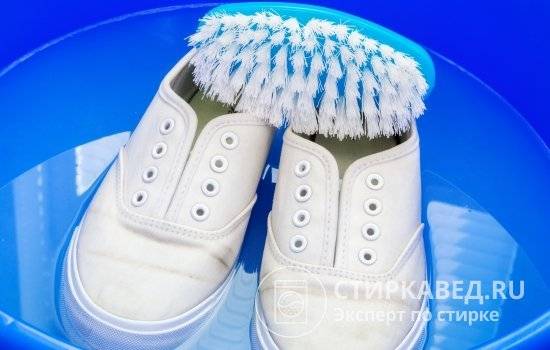 Do not use a harsh brush on white sneakers as it may damage the fabric structure
Do not use a harsh brush on white sneakers as it may damage the fabric structure
Rules and guidelines
Before the procedure for returning cleanliness and whiteness to socks, a number of rules should be determined. The result can only be achieved by constant washing of the item. Do not heavily contaminate your socks, otherwise you will have to get rid of them. It is necessary to wash when the dirt is fresh. If the socks are left in the dirty laundry basket for a long time, their color cannot be restored.
Soak
The socks are pre-soaked to remove a significant portion of the dirt. When soaking:
- completely cover things with water;
- add soda for washing or washing powder;
- you can drop a little ammonia solution.
Withstand the procedure from half an hour to 1 hour, depending on the type of stains.
It is better to wash white socks at a temperature of 60 degrees. Warm water at 40 degrees is suitable for soaking.
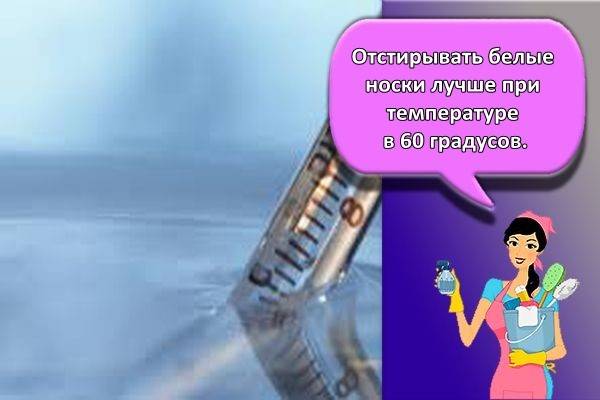
Eversion
Before washing, be sure to turn the products inside out. Sand and dirt can accumulate inside. Shake things off. The rolls inside the socks are removed with special rollers.
Sorting
Sort things so that socks from the same materials are together. Be sure to put white socks with light-colored items. Wash thick and thin items separately. The degree of soiling plays a role in the sorting of laundry.
We return to products whiteness without boiling
Removing dirt from white things will not be difficult for men. A very unusual method was invented especially for them.
How to wash socks from dirt and how to bleach:
- A plastic bottle (5–6 l) with a wide neck is filled with soapy water.
- White socks are pushed through the neck and the lid is tightly closed.
- The capacity is put in the trunk and sent on business.
This method is recommended in extreme cases. Boiling white socks is justified if there is deep, ingrained dirt on the items. It is also recommended to boil things in cases where they have lost their whiteness.
Boil white hosiery to disinfect them. This applies to those cases when things have been in contact with the source of bacteria and viruses for a long time.
Boiling is the only option for removing dirt from white socks if a person is allergic to chemical or household laundry detergents.
It is recommended to boil hosiery according to the following scheme:
- Take a pot made of enamel or stainless steel and pour 2 liters of water into it.
- Load linen into it.
- Add a choice of either 30 g of grated laundry soap, or a mixture based on 110 g of washing powder and two large spoons of bleach. You can use a mixture based on 35 ml of ammonia and 160 g of soda.
- Put the container on medium heat.
- After boiling the solution with linen, reduce heat and cook for 15 minutes. With heavy dirt, you can boil things for half an hour.
- In the process of digestion of hosiery, it is necessary to periodically turn them over with special tongs.
- After boiling, things are rinsed.
After the preliminary wash, proceed to the bleaching procedure. Without boiling, three categories of agents do this task well:
- purchased chemicals (bleaches and stain removers);
- natural brighteners;
- pharmaceutical preparations.
The original color of socks is returned in two ways: locally, by applying the clarifier directly to the badly washed area, and by soaking in a bleaching aqueous solution.
Soaking with a clarifier is used in cases where socks become yellowish or gray after repeated washing.
If the decision is made to use a chemical agent, then the choice should be made in favor of oxygen bleach. Its advantages:
- Versatility. Suitable for all fabrics.
- Soda and peroxide, into which it decomposes in water, do not damage the fibers, so the product is suitable for continuous use.
- Washes both fresh and stubborn dirt and stains from white socks.
Chlorine brighteners, for example: "Domestos", "Whiteness", also return white socks, but not all. Only cotton, bamboo and flax products can withstand the action of an aggressive substance. Chlorine is contraindicated for synthetic fabrics. In addition, chlorine-containing products are used only for soaking and hand washing. It is forbidden to add them to the machine.
You cannot wash children's clothes with chemical clarifiers. They can cause allergies.
Pharmacy preparations
The socks will return white color when soaked and preparations from the first-aid kit. Whitening properties are:
3% peroxide solution. It is poured into warm water (30 ml per 1 liter). The socks are immersed in the solution so that it completely covers them. And, turning over from time to time, soak for half an hour
It is important that the entire product is immersed in water, otherwise stains will remain on it. Ammonia
The drug is added to water (1 tbsp. L. Per 1 l). If the item has slightly changed color, then it is enough to hold it in the solution for 2 hours. If it is heavily worn, the whitening time is increased to 10 hours.
If you mix ammonia, peroxide with a detergent (for 3 liters of warm water, 2 tablespoons of each substance), their whitening effect will increase. The socks are kept in the solution for 3 hours.
- Boric acid. 50 g dry or one and a half tbsp. l. the liquid substance is added to 3 liters of water and things are soaked for 2 to 4 hours.
- Potassium permanganate. Grains of the substance are mixed into a glass of water until a pale solution is obtained. The liquid (without sediment) is poured into a basin with detergent, and then placed in a socks solution for 30 minutes.
- Acetylsalicylic acid. A powder is prepared from the tablets, and an aqueous solution is prepared on its basis (1-4 tablets per 1 liter of water, depending on the degree of contamination). Detergent is added to the basin with aspirin and the product is kept in it for 2-6 hours.
Soak
The pre-soak process for hosiery makes any wash easier. Things are kept in warm water for 2–4 hours. The cold soak takes longer. Here's how to prepare an aqueous solution from detergents or bleaches.
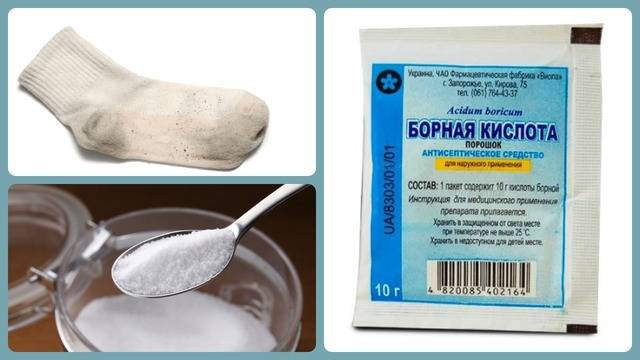
Boric acid
This versatile powder is the perfect whitening product that is safe even for babies. If you dissolve 2 tablespoons of boric acid powder in 2 liters of slightly warmed water and soak the socks and knee-highs, then after two hours the borax included in its composition will remove all dirt without damaging the fabric.Simultaneously with whitening, prophylaxis against fungus can be carried out, since boric acid powder belongs to antimycotic drugs. Soaking hosiery in a solution made from boric acid and ammonia will cope with multiple contaminants. In one liter of water, they are dissolved in one tablespoon.
Vinegar
It is also often used to soak washed light-colored hosiery to remove the gray tint of fabric. For soaking in one liter of water, a couple of tablespoons of vinegar is enough. Anyone will do, except balsamic. For more effective action, the vinegar solution is heated to 40 degrees. The socks are soaked for at least an hour. This method is commonly used to soften terry socks. Often, vinegar is added during washing so that there are no streaks on the fabric.
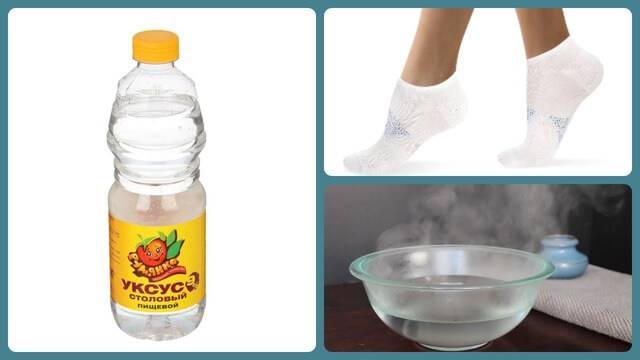
Lemon juice
Frequent washing often results in a loss of the freshness and attractiveness of white socks. But it is enough to hold them in water with the addition of freshly squeezed lemon juice, as they take on a different look. To freshen up washed light-colored hosiery, soak them in a bowl of lemon water for two hours.
Laundry soap
It is a traditional, economical detergent for washing white socks. Despite the diverse range of detergents on store shelves, a nondescript-looking bar is still in demand, since it is safer to wash white socks with household, completely natural soap than expensive powder. It consists of sodium salts of fatty acids, therefore it effectively removes dirt in cold and hot water. It is as easy as shelling pears to use it: lather each sock heavily and soak it for about an hour, and then send it to the washing machine. The resulting effect is often unattainable even for expensive bleaches.
Hydrogen peroxide
When soaking, hydroperite performs two functions at once: bleaching and disinfection. For the solution, you will need to dilute a spoonful of peroxide in water. The washed socks are soaked for about half an hour. It is necessary to turn them over from time to time, but not to wring them out. Peroxide successfully copes with yellowed stains that appear on the fabric during long storage.
Soda
As a natural bleach, baking soda can be used alone or in combination with other products. In a solution prepared from 1 liter of water, 1 tablespoon of soda, a teaspoon of peroxide, socks should lie for at least four hours, after which they should be sent to the washing machine. A mixture of 2 tbsp. l. soda, 3 tsp. peroxide and 1 tsp. dish soap will help get rid of any greasy stains.

Manually
Washing white socks by hand is not the easiest option, but it is much more effective, as you can observe the result during the wash process, which will let you know which detergent should be applied and when. You can wash white socks at home without a washing machine using the following methods:
- First, soak your socks in warm water, rubbing the dirtiest places with glue soap. It is recommended to use warm or cool water, as otherwise the socks may turn yellow. After rubbing them with soap and soaking in warm water, put the socks on your hands like mittens, and repeat the usual procedure of washing your hands with laundry soap with socks on your hands. If the dirt was not very old, then at this stage the dirt should be washed off.
- Another way you can effectively wash your white socks is with lemon. To do this, soak the socks in cold water with the addition of lemon juice, after which they will need to be washed.
- Boiling water will also help wash your white socks. To do this, mix the detergent and a few pieces of fresh lemon in cold water, then put the socks there and send them to the fire to boil.It is necessary to boil socks in this water for about a quarter of an hour, after which they must be rinsed with clean water and allowed to dry naturally.
- Boric acid can also be used to wash off white socks. To do this, you need to add a spoonful of acid to a liter of water at room temperature, and then lower the white socks there. After a couple of hours, you will see how your socks have lightened. After that, they should be washed additionally. You can also wash your socks from dirt on the sole in this way.
- Before washing, soak the socks in water with a large amount of baking soda for several hours, and then wash them in the traditional way.
- Soaking your socks in water with two tablespoons of ammonia will make it much easier to wash them off. In addition, by this action, you can return them to their former whiteness.
- Another way to remove dirt from white socks is to use whiteness. But this method is only suitable for cotton socks.

Description
It is often quite difficult to wash white socks, since over time the fabric turns yellow or gray and nothing remains of the once snow-white socks. What to do in this case? Buy only dark socks? Fortunately, no. In our article, you can find recommendations for hostesses that will tell you how to wash white socks at home, returning them, if not the original, then as close to it as possible. Here are some quick tips to get the most out of your socks:
- Before washing, socks must be turned out and cleaned of all visible debris.
- Do not store white socks in a laundry basket for a long time, as they can become more soaked in dirt and lose their former whiteness.
- For the most effective washing of white socks, add lemon juice to the water.
- To wash the socks in the washing machine, each pair must be fastened with a special clip that will prevent the socks from getting lost.
- Wash white socks inside out.
Now let's take a look at the recommendations for hand and machine washable white socks.
Manually
Washing white socks by hand is not the easiest option, but it is much more effective, as you can observe the result during the wash process, which will let you know which detergent should be applied and when. You can wash white socks at home without a washing machine using the following methods:
- First, soak your socks in warm water, rubbing the dirtiest places with glue soap. It is recommended to use warm or cool water, as otherwise the socks may turn yellow. After rubbing them with soap and soaking in warm water, put the socks on your hands like mittens, and repeat the usual procedure of washing your hands with laundry soap with socks on your hands. If the dirt was not very old, then at this stage the dirt should be washed off.
- Another way you can effectively remove white socks is with lemon. To do this, soak the socks in cold water with the addition of lemon juice, after which they will need to be washed.
- Boiling water will also help wash your white socks. To do this, mix the detergent and a few pieces of fresh lemon in cold water, then put the socks there and send them to the fire to boil. It is necessary to boil socks in this water for about a quarter of an hour, after which they must be rinsed with clean water and allowed to dry naturally.
- Boric acid can also be used to wash off white socks. To do this, you need to add a spoonful of acid to a liter of water at room temperature, and then lower the white socks there. After a couple of hours, you will see how your socks have lightened. After that, they should be washed additionally. You can also wash your socks from dirt on the sole in this way.
- Before washing, soak the socks in water with a large amount of baking soda for several hours, and then wash them in the traditional way.
- Soaking your socks in water with two tablespoons of ammonia will make it much easier to wash them off. In addition, by this action, you can return them to their former whiteness.
- Another way to remove dirt from white socks is to use whiteness. But this method is only suitable for cotton socks.

In the washing machine
Anyone who has washed socks in a washing machine probably knows how difficult it can be to find a pair after such a wash. And all because it is possible to wash white socks in a washing machine at home only if the washing process is organized correctly. To do this, you should use our recommendations:
- When washing socks, always use a special wash bag for small items. You can wash your socks in such a net as effectively as without it, but in this case they will not get lost, and it will be easier for you to find a pair.
- There are also special clips, using which, it will be very convenient to wash the socks in the washing machine. The clips hold the socks together, preventing them from getting lost in pillowcases or T-shirts.
- You can be original and try to combine a pair of socks with a stapler, but in this case, your socks will turn into a sieve after several such washes.
When washing white socks in a washing machine, you should set the temperature not higher than 45 degrees, otherwise the socks will darken or acquire a yellow tint. You can also add a few tablespoons of baking soda to the powder container. This will help you get the most out of your white socks. Remember that whitening is difficult in principle, and socks are subject to the most severe stains.

Similar materials
-
How to starch a knitted garment?
-
How to remove mold from clothes?
-
How to remove spools from clothes?
-
How to wash off engine oil?
How to wash?
At first glance, there are not so many options for washing white socks at home. For this, there are proven agents such as washing powder. So that over time, white socks do not acquire a washed-out look, do not turn yellow and do not turn gray, various means from a set of household chemicals, as well as those that housewives have used for centuries, help to wash the dirt.
There are several ways to preserve color. In order to get the result you expected at the end of the wash, the white socks must first be soaked. To make them snow-white, you can apply folk, proven ways to solve this problem:
- Use a dishwasher detergent. It contains substances that soften water and eat away at dirt. After adding a little of this substance to the soaking container, leave the socks in the solution for two hours.
- You can place the products in water with soda dissolved in it. Four tablespoons of the powder are taken in two liters of water. Dip clothes in such a liquid for several hours, and then start washing them.
- For soaking, it is effective to use laundry soap. Textiles should be immersed in water, which needs very little for this, rubbed with soap and left in a basin overnight.
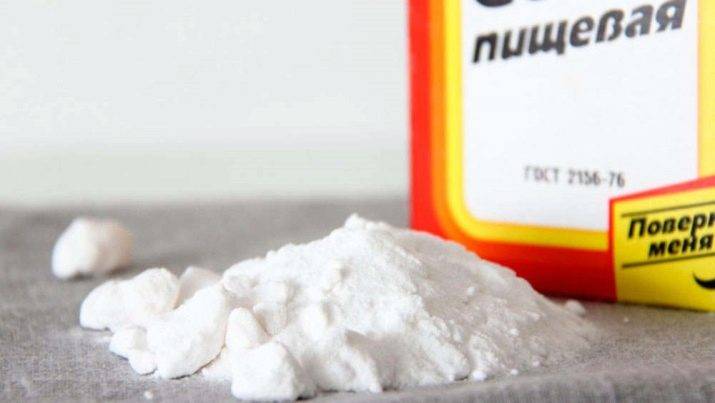
- You can soak your socks using boric acid. For a liter of water, you need to take a tablespoon of this substance. Two to three hours of keeping the products in such a mixture will be enough. If the dirt is heavily ingrained, extend the duration to five hours and then wash. And keep in mind that when handling this acid, you need to work with rubber gloves.
- When there is lemon or citric acid in the house, you can soak your socks using this product as well. Make a weak solution of citric acid and water, or squeeze lemon juice directly into a steeping container. A medium-sized fruit is enough for business. To be sure to succeed, you can rub your socks with half a lemon or soak in a strong acid solution.
- You can also use table vinegar. It is effective in dissolving dirt and perspiration marks.You need to take half a glass of vinegar for three liters of water and leave socks in this liquid for several hours.
- To prevent the white socks from turning yellowish from systematic washings, it is better to regularly soak them in a solution of ammonia and hydrogen peroxide.
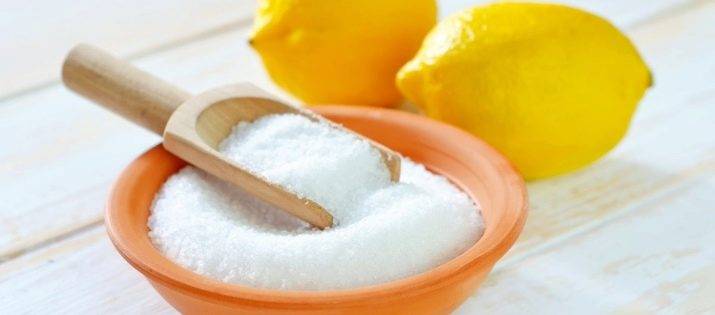
- A good way to bring the whiteness back to socks is to use turpentine. When soaking products in water, in addition to washing powder, add two tablespoons of this product. Leave the socks in this form for a day, and then wash as usual.
- Potassium permanganate effectively prevents gray socks. It will also help to restore the former color to textiles. In two liters of hot water, you need to dilute grains of manganese until a pink liquid is formed. To complete the effect, close the basin with the soaked socks with the lid. If there is no lid, take a regular bag. After a few hours, rinse and wash the socks properly.
- You can use household chemicals for washing with chlorine to soak white cotton items, although this method is not recommended too often because the fabric of the socks will quickly deteriorate. It is necessary to use a weak solution when soaking, and drip a chlorine-containing agent on the stain before washing. When it brightens, you can start washing directly.
- To soak socks with scuffs and stains from grass and stubborn dirt, mix detergent with a bleaching effect and dishwashing gel in a 1: 1 ratio. Then add a little water and stir vigorously until foam forms. Apply the resulting solution to the contaminated areas and leave the socks for about an hour.
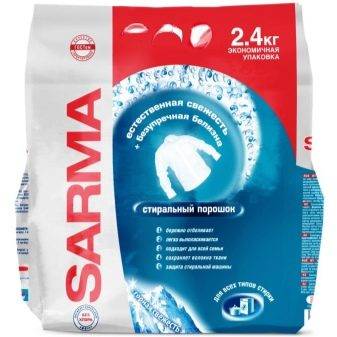

After that, you can wash the items by hand. This method of soaking is suitable for cotton and synthetic socks, but should not be practiced often or the fabric will deteriorate quickly.
If soaking does not work, the socks can be boiled. Pour water into a large basin, add detergent and put things to "cook". If you "fill such a soup" with the juice of one lemon and a small amount of laundry soap, in half an hour the socks will become snow-white.

